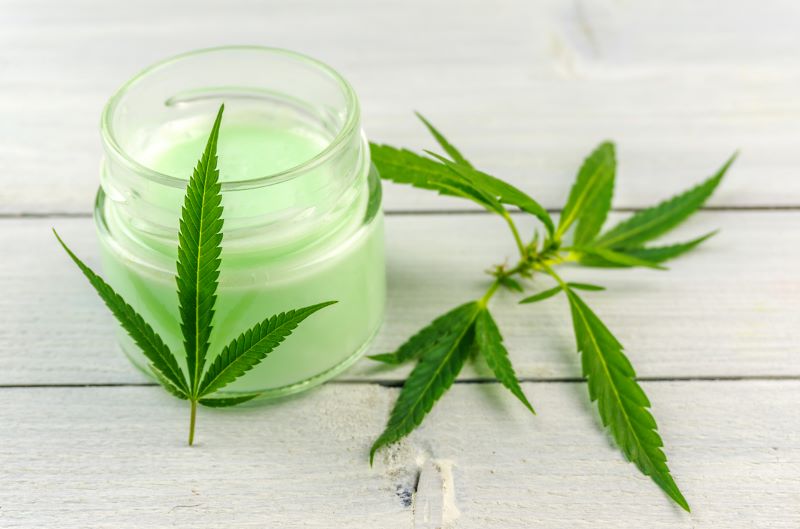CBD topicals are a hot topic these days, thanks largely to the growing chorus of users who rave that these products help relieve pain and inflammation.
Yet if you’re not yet a member of the CBD fan club, you might not appreciate what all the topicals hoopla is about. Here, we’ll explore CBD and CBD topicals to give you a better sense of what you might be missing out on.
What is CBD?
CBD stands for cannabidiol. It’s the second most prevalent of the active ingredients in cannabis, according to Harvard Medical School. CBD is derived from the hemp plant, which is a cousin of the marijuana plant.
CBD might help with conditions like pain, anxiety and insomnia, Harvard Medical School says.
How do CBD topicals work?
CBD topicals work by being absorbed through your skin. If it’s applied more liberally, a CBD topical might be absorbed through your pores, resulting in a broader effect, says Dr. Peter Swanz, a board-certified naturopathic physician. The absorbed CBD then interacts with your body’s cannabinoid receptors.
Cannabinoids — a group of naturally occurring compounds that includes cannabidiol — look for and activate cannabinoid receptors. When they get together, they tell your body to feel a certain way and do certain things, according to Planted U, a website that educates people about cannabis. Cannabinoids also affect your immune, nervous and gastrointestinal systems.
What forms of CBD topicals are there?
CBD topicals — referring to an array of products that are meant to be applied to the skin but not consumed — include bath bombs, creams, lotions, massage-type oils, ointments and salves.
Can you get high from using CBD topicals?
No. Unlike tetrahydrocannabinol (THC), one of more than 100 cannabinoids found in cannabis, CBD does not contain high-inducing psychoactive properties, the CBD Awareness Project says.
As with most CBD products, CBD topicals come from industrial hemp, which comprises THC levels of 0.30 percent or less, according to the CBD Awareness Project. This means that CBD topicals won’t cause you to be “stoned.”
Are CBD topicals regulated by the U.S. Food and Drug Administration (FDA)?
No. Under the federal Food, Drug and Cosmetic Act, cosmetic products and ingredients do not require FDA approval, except for most color additives. However, FDA regulators can step in if they suspect a cosmetic product or ingredient might be harming U.S. consumers.
What are the potential benefits of CBD topicals?
One of the frequently touted benefits of CBD topicals is relief from minor and occasional pain. For instance, you might apply a CBD cream, balm or salve to ease achy knees or sore back muscles.
“As the CBD research studies continue to accumulate, it is clear that CBD has a place in pain management in the U.S.,” Swanz says.
However, no human studies have been done yet on the use of CBD topicals for pain management, according to SELF magazine.
“It’s totally possible (and actually pretty likely) that any effect you get from a commercially available topical CBD product is a placebo effect or related to some other aspect of the product,” SELF says.
Among the other benefits that someone might gain from CBD balm, cream, lotion and other topical products are:
- Relaxation
- Soothing relief for inflamed or irritated skin
- Help for acne or dry skin
Before beginning a regimen that includes CBD topicals, check with your healthcare provider.
Does CBD enter your bloodstream when you apply CBD topicals?
Your skin isn’t very permeable, so when you rub CBD topicals onto your skin, very little CBD seeps into your bloodstream, the CBD Awareness Project says.
What should you do if a CBD topical doesn’t seem to be working?
CBD experts urge people to not give up altogether if a certain topical isn’t delivering the results you’d hoped for. Rather, they advise people to experiment with topicals by switching brands or dosages, for instance.
“The range at which CBD can be helpful is quite broad, and because everyone is different, there is ‘no magic dose fits all’ approach for CBD,” Swanz says.
Swanz suggests paying close attention to how much CBD (measured in milligrams) a topical contains. A jar of one topical might have only 50 mg of CBD, while another might offer 500 mg. In that case, you’d theoretically need to use five times as much of the 50 mg product to achieve the same topical dose as the 500 mg product, he says.
To figure out the right level of CBD for you, try applying the topical more frequently throughout the day and consider supplementing it with an oral CBD, Swanz recommends.
Keep in mind, Swanz says, that if a CBD topical still isn’t working for you, the ailment you’re trying to address might not be related to your endocannabinoid system, which controls key aspects of your biology and includes cannabinoid receptors. “In order to heal holistically, it is crucial to address the underlying issues,” he says.

